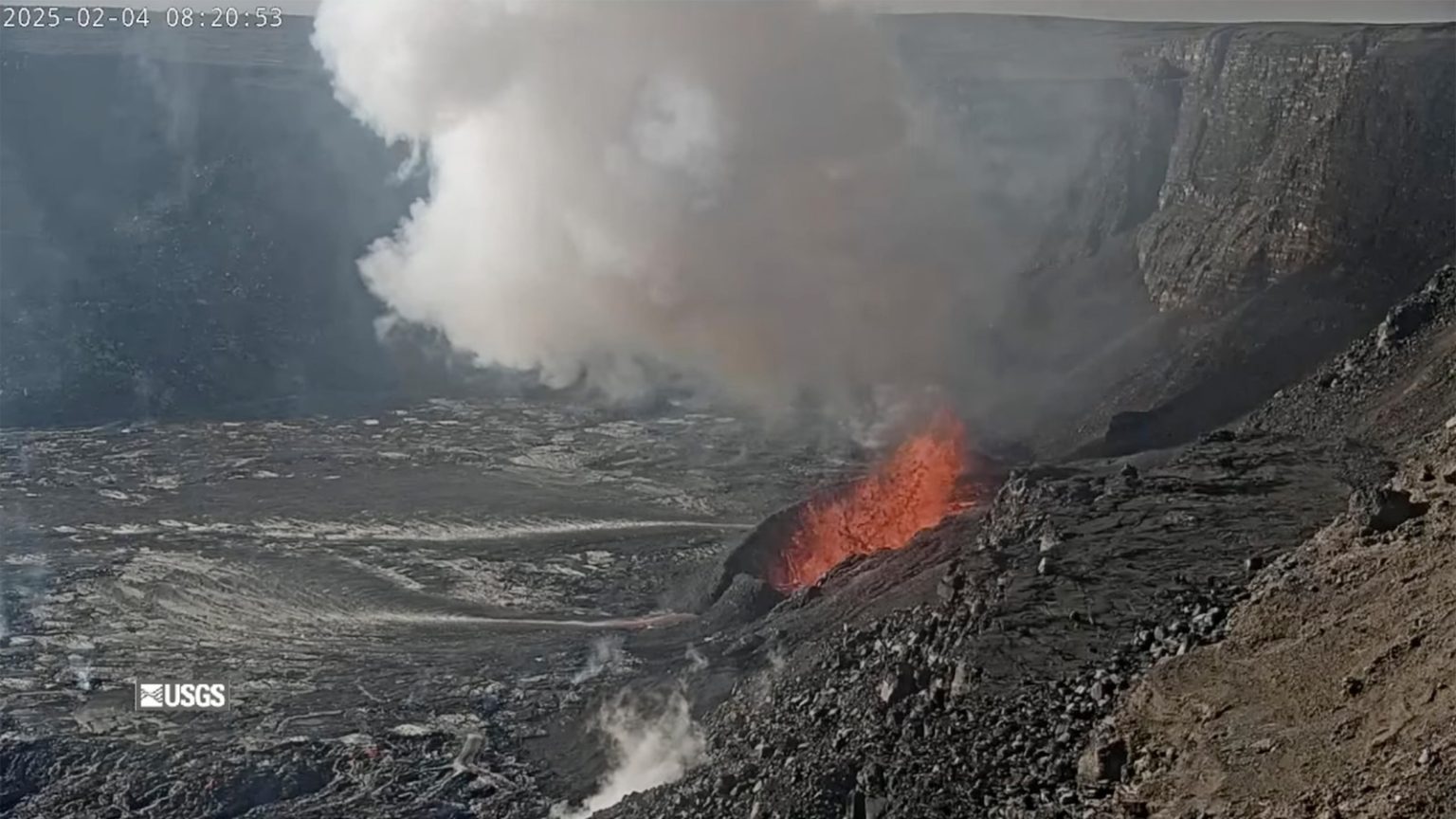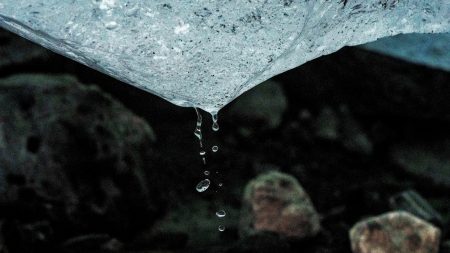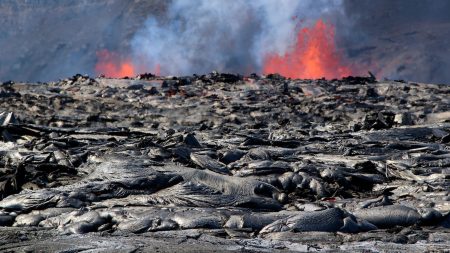A New Eruption Episode Unfolds: Kilauea Volcano Roars Back to Life
The Kilauea volcano, one of the most active volcanoes in the world, made headlines again as it erupted on December 23, marking its eighth significant episode in recent years. Located on Hawaii’s Big Island, this iconic volcano has long been a source of scientific fascination and natural wonder. The latest eruption began in the Halemaʻumaʻu crater, located at Kilauea’s summit, and has captured the attention of volcanologists and the public alike. While the eruption has paused and resumed multiple times, the latest activity has been particularly striking, with lava fountains reaching heights of over 250 feet (76.2 meters) on Monday night. The Hawaiian Volcano Observatory (HVO), which closely monitors Kilauea’s activity, reported that the fountains grew rapidly from 50 feet (15.24 meters) to their peak height in just one hour.
The Eruption’s Timeline and Intensity
The eruption began on December 23, and by Monday night, the activity had intensified significantly. Small, sporadic spatter fountains were first observed on Sunday, which gradually grew more intense as the days passed. By Tuesday morning, the HVO’s webcam captured the mesmerizing sight of vigorous streams of red lava flowing from the vent. The fountains were primarily confined to a single area within the closed section of Hawaii Volcanoes National Park, ensuring that the eruption posed no immediate threat to nearby homes or infrastructure. This controlled yet awe-inspiring display of nature’s power has been a reminder of Kilauea’s unpredictable yet captivating behavior.
Understanding Kilauea’s Volcanic Activity
Kilauea, which translates to “spewing” or “much spreading” in Hawaiian, has been erupting intermittently since 1983, making it one of the most continuously active volcanoes on Earth. Its unique structure, characterized by shield volcanoes, allows for the relatively fluid movement of lava compared to other volcanoes. The latest eruption has been particularly notable for its episodic nature, with periods of high activity followed by quieter phases. Scientists attribute this pattern to the dynamic interplay of magma movement beneath the surface and the varying pressure within the volcanic system.
Environmental and Ecosystem Impact
Despite its intense display, the eruption has been carefully monitored to ensure minimal impact on the surrounding environment. The lava flows have been contained within the boundaries of Hawaii Volcanoes National Park, which was closed to visitors as a precautionary measure. While volcanic activity can pose risks, such as the release of gases like sulfur dioxide, the controlled nature of this eruption has allowed scientists to study it safely. In fact, eruptions like this play a critical role in shaping the island’s landscape and contributing to the growth of new land. Over time, the lava flows will cool, harden, and become part of the island’s ever-evolving terrain.
Human Response and Safety Measures
The Hawaiian Volcano Observatory has been instrumental in tracking the eruption’s progression, providing vital updates to both scientists and the public. The observatory’s webcam has allowed people around the world to witness the eruption in real-time, offering a unique opportunity for education and appreciation of geological phenomena. Meanwhile, local authorities have implemented safety measures to protect both residents and visitors. The closed area within the national park ensures that no one is exposed to the immediate dangers of the eruption, such as falling ash or toxic gases.
The Ongoing Story of Kilauea
As the Kilauea volcano continues to captivate the world, it serves as a powerful reminder of the dynamic forces that shape our planet. This latest eruption, while dramatic, is just another chapter in the long history of this remarkable geological wonder. Scientists will continue to monitor Kilauea’s activity closely, gaining valuable insights into the inner workings of volcanoes. For now, the people of Hawaii and the global community can marvel at the sheer force and beauty of this natural phenomenon, knowing that it is both a source of danger and a symbol of resilience.















